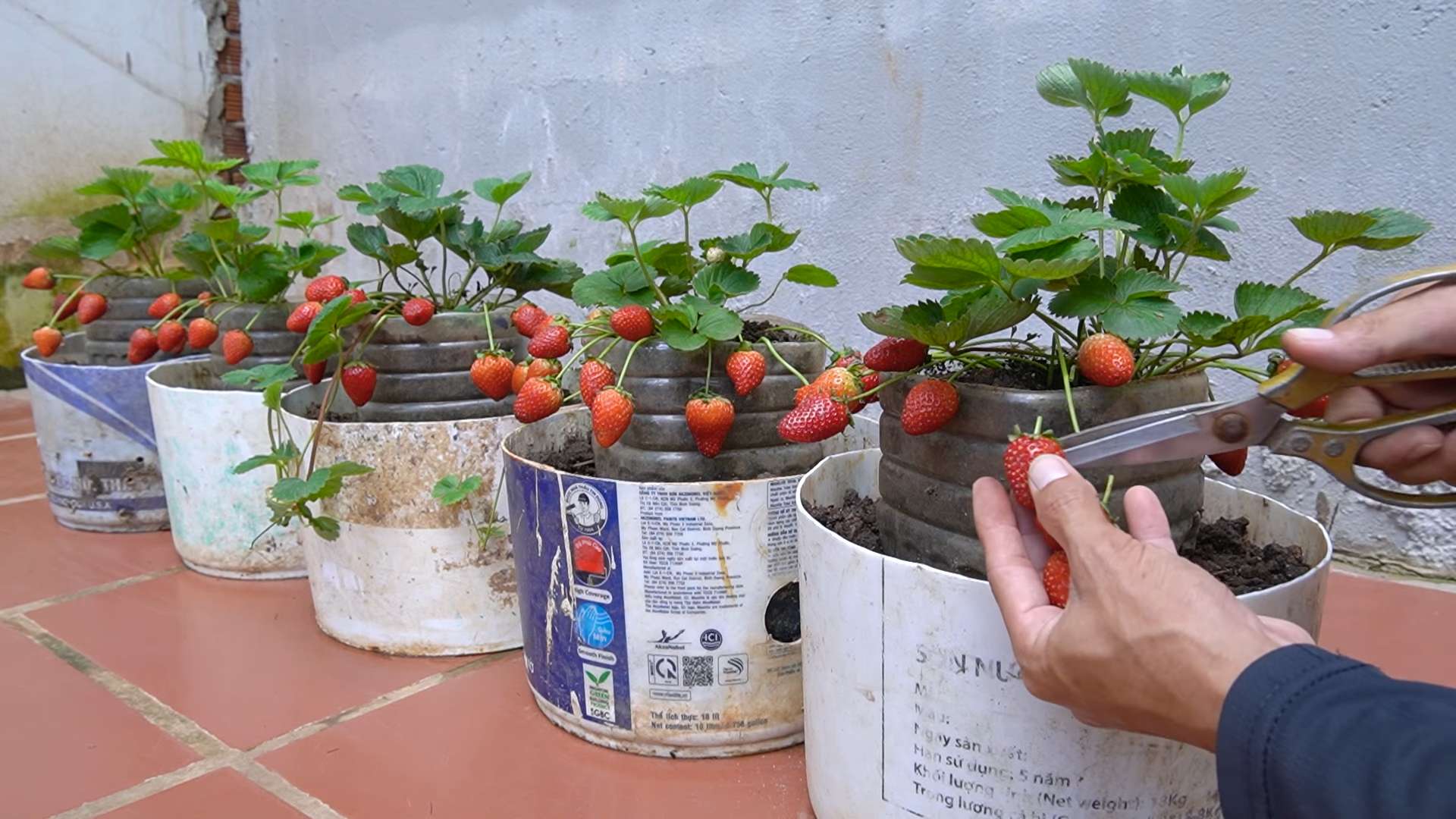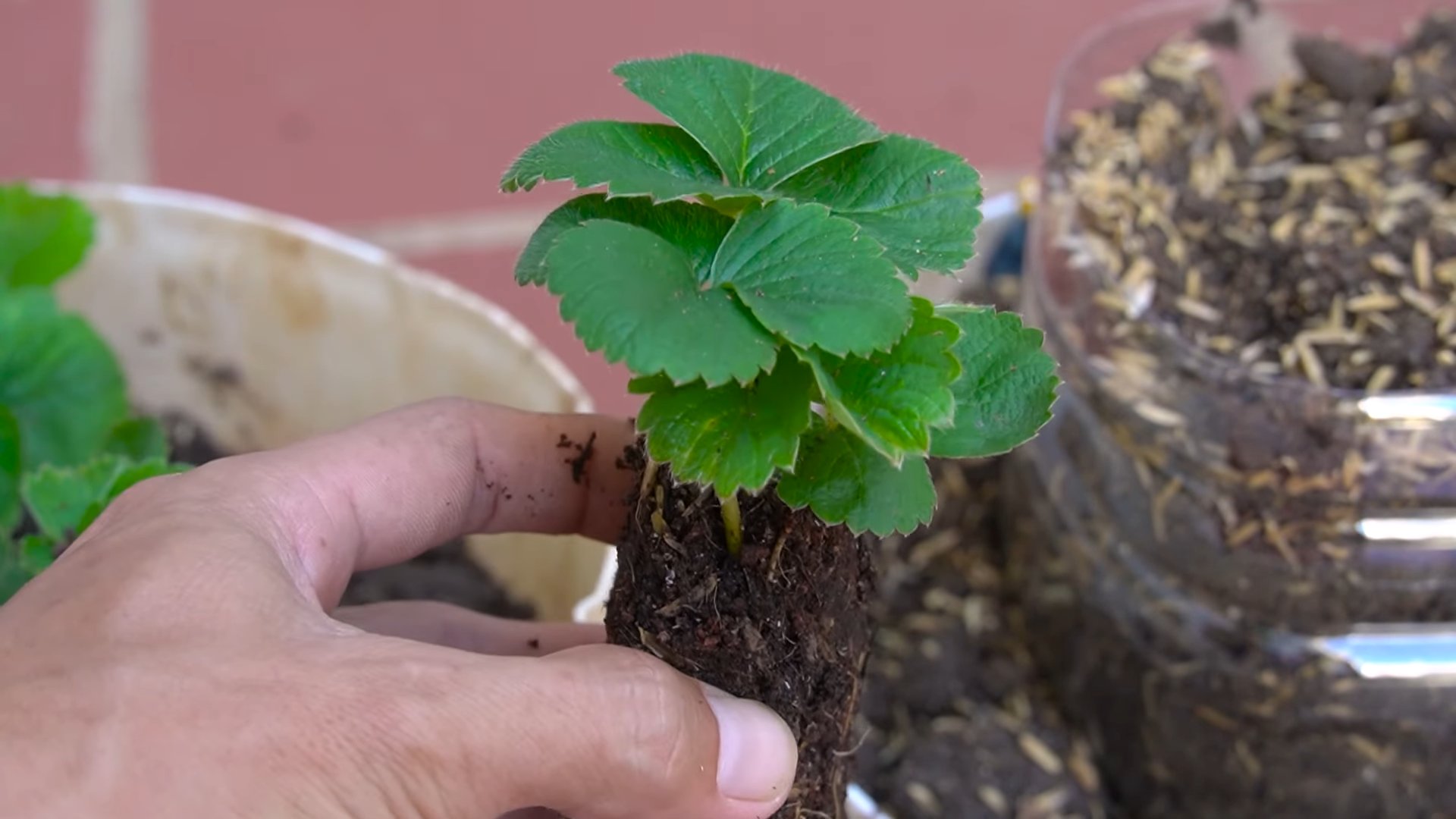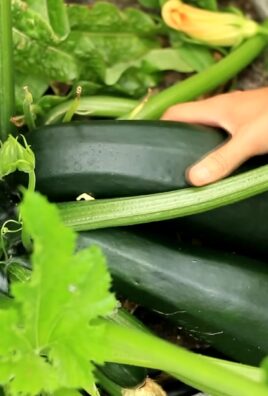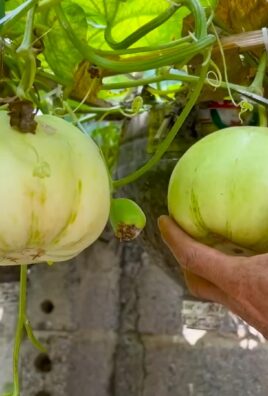Everbearing Strawberries Growing Tips: Imagine stepping into your backyard and plucking juicy, red strawberries fresh from your own garden, not just once, but throughout the entire growing season! That’s the magic of everbearing strawberries, and I’m here to share some simple, yet effective, tips to make that dream a reality. For centuries, cultivating strawberries has been a cherished tradition, with evidence suggesting their cultivation dates back to ancient Rome. But the development of everbearing varieties is a more recent innovation, allowing us to enjoy these delicious fruits for months on end.
Let’s face it, who wouldn’t want a continuous supply of homegrown strawberries? Store-bought berries often lack the vibrant flavor and freshness of those grown in your own backyard. Plus, knowing exactly where your food comes from and how it’s grown is incredibly rewarding. This DIY guide will provide you with practical everbearing strawberries growing tips, covering everything from choosing the right variety and preparing your soil to watering techniques and pest control. I’ll show you how to maximize your yield and enjoy a bountiful harvest of sweet, delicious strawberries all season long. So, grab your gardening gloves, and let’s get started!

Everbearing Strawberries: My Secrets to a Bountiful Harvest!
Okay, strawberry lovers, gather ’round! I’m about to spill all my secrets on how to get a crazy-good harvest of everbearing strawberries. Forget those tiny, sad berries you sometimes find at the grocery store. We’re talking juicy, sweet, and plentiful! I’ve been growing everbearing strawberries for years, and trust me, with a little know-how, you can have a strawberry patch that’s the envy of the neighborhood.
Choosing the Right Everbearing Variety
First things first, not all everbearing strawberries are created equal. Some are better suited for certain climates, and some just taste better, in my humble opinion. Here’s a quick rundown of some popular varieties I’ve had success with:
* Albion: These are my go-to for flavor. They’re incredibly sweet and produce large, firm berries. Plus, they’re pretty disease-resistant, which is always a bonus.
* Seascape: If you live in a coastal area, Seascape is your friend. They tolerate cooler temperatures and still pump out a ton of berries.
* Ozark Beauty: This is a classic everbearing variety that’s known for its reliability. They’re not quite as sweet as Albion, but they’re still delicious and very productive.
* Tristar: Tristar is a great choice if you’re looking for a compact plant. They’re perfect for containers or small gardens.
My tip: Do a little research on which varieties thrive in your specific climate. Your local nursery should be able to give you some good recommendations.
Preparing Your Strawberry Bed: The Foundation for Success
Strawberries are pretty easygoing, but they do have a few preferences when it comes to soil. Here’s how I prep my strawberry beds for maximum berry production:
* Sunlight is Key: Strawberries need at least 6-8 hours of direct sunlight per day. The more sun, the more berries!
* Well-Drained Soil: Strawberries hate soggy feet. Make sure your soil drains well. If you have heavy clay soil, amend it with plenty of compost and other organic matter.
* Slightly Acidic Soil: Strawberries prefer a soil pH between 5.5 and 6.5. You can test your soil with a simple soil testing kit from your local garden center. If your soil is too alkaline, you can lower the pH by adding sulfur or peat moss.
* Rich in Organic Matter: Strawberries are heavy feeders, so they need plenty of nutrients. I like to amend my soil with compost, aged manure, and a slow-release organic fertilizer.
Step-by-Step Bed Preparation:
1. Clear the Area: Remove any weeds, grass, or other debris from the area where you’ll be planting your strawberries.
2. Till the Soil: Till the soil to a depth of at least 12 inches. This will help to loosen the soil and improve drainage.
3. Amend the Soil: Add plenty of compost, aged manure, and a slow-release organic fertilizer to the soil. Mix everything in well.
4. Create Raised Beds (Optional): If you have heavy clay soil or poor drainage, consider creating raised beds. This will help to improve drainage and prevent root rot.
5. Water Thoroughly: Water the soil thoroughly after you’ve prepared it. This will help to settle the soil and get it ready for planting.
Planting Your Everbearing Strawberries: Giving Them the Best Start
Now for the fun part – planting! Here’s how I plant my everbearing strawberries to ensure they get off to a great start:
* Timing is Important: The best time to plant everbearing strawberries is in early spring or late summer. This gives them plenty of time to establish themselves before the hot summer or cold winter months.
* Spacing is Crucial: Space your strawberry plants about 12-18 inches apart in rows that are 3-4 feet apart. This will give them plenty of room to grow and spread.
* Planting Depth: This is super important! Make sure you plant your strawberry plants at the correct depth. The crown of the plant (where the roots meet the stem) should be just above the soil line. If you plant them too deep, they’ll rot. If you plant them too shallow, they’ll dry out.
* Water Well: Water your strawberry plants thoroughly after planting. This will help to settle the soil and get them off to a good start.
Detailed Planting Instructions:
1. Dig a Hole: Dig a hole that’s large enough to accommodate the root ball of your strawberry plant.
2. Loosen the Roots: Gently loosen the roots of the strawberry plant before planting. This will encourage them to spread out and establish themselves in the soil.
3. Place the Plant in the Hole: Place the strawberry plant in the hole, making sure that the crown of the plant is just above the soil line.
4. Backfill with Soil: Backfill the hole with soil, gently firming it around the plant.
5. Water Thoroughly: Water the strawberry plant thoroughly after planting.
Caring for Your Everbearing Strawberries: Keeping Them Happy and Healthy
Once your strawberries are planted, it’s important to give them the care they need to thrive. Here’s my routine for keeping my everbearing strawberries happy and healthy:
* Watering: Strawberries need consistent moisture, especially during fruiting. Water them deeply whenever the top inch of soil feels dry. Avoid overhead watering, as this can lead to fungal diseases. Drip irrigation or soaker hoses are ideal.
* Fertilizing: Everbearing strawberries are heavy feeders, so they need regular fertilization. I like to use a balanced organic fertilizer every 4-6 weeks.
* Mulching: Mulching is essential for strawberries. It helps to retain moisture, suppress weeds, and keep the berries clean. I like to use straw, pine needles, or wood chips as mulch.
* Weed Control: Keep your strawberry patch free of weeds. Weeds compete with strawberries for nutrients and water. Hand-pull weeds regularly or use a hoe to cultivate the soil.
* Pest and Disease Control: Keep an eye out for pests and diseases. Common strawberry pests include slugs, snails, and aphids. Common diseases include gray mold and leaf spot. Treat any problems promptly with organic pest control methods or fungicides.
* Pruning: This is where everbearing strawberries differ from June-bearing varieties. With everbearing strawberries, you want to pinch off the first flush of blossoms in the spring. This encourages the plant to put its energy into growing strong roots and foliage, which will result in a larger harvest later in the season.
* Renovating: After a few years, your strawberry plants may start to decline in productivity. To renovate your strawberry patch, prune back the plants to about 1 inch above the ground in late summer or early fall. This will encourage new growth and help to rejuvenate the plants.
Detailed Care Instructions:
1. Watering Schedule: Check the soil moisture regularly and water deeply whenever the top inch of soil feels dry.
2. Fertilizing Schedule: Fertilize every 4-6 weeks with a balanced organic fertilizer.
3. Mulching Application: Apply a layer of mulch around your strawberry plants to a depth of 2-3 inches.
4. Weed Control Methods: Hand-pull weeds regularly or use a hoe to cultivate the soil.
5. Pest and Disease Monitoring: Inspect your strawberry plants regularly for pests and diseases.
6. Pruning Technique: Pinch off the first flush of blossoms in the spring.
7. Renovation Process: Prune back the plants to about 1 inch above the ground in late summer or early fall.
Harvesting Your Everbearing Strawberries: The Sweet Reward!
Finally, the moment we’ve all been waiting for – harvesting! Here’s how I harvest my everbearing strawberries to ensure they’re at their peak flavor:
* Pick When Ripe: Strawberries are at their sweetest and juiciest when they’re fully ripe. Look for berries that are bright red and slightly soft to the touch.
* Pick in the Morning: The best time to pick strawberries is in the morning, after the dew has dried. This is when they’re at their coolest and firmest.
* Handle with Care: Strawberries are delicate, so handle them with care. Gently twist the berry off the stem, leaving the green cap attached.
* Store Properly: Store your freshly picked strawberries in the refrigerator. They’ll keep for several days.
Harvesting Tips:
1. Ripeness Check: Look for berries that are bright red and slightly soft to the touch.
2. Harvesting Time: Pick strawberries in the morning, after the dew

Conclusion
So, there you have it! Mastering the art of growing everbearing strawberries doesn’t require a green thumb blessed by the garden gods. It’s about understanding their needs, providing the right environment, and implementing these simple yet effective tips. From selecting the perfect sunny spot to diligently deadheading spent blossoms, each step contributes to a bountiful harvest that will have you enjoying fresh, juicy strawberries throughout the growing season.
Why is this a must-try? Because store-bought strawberries simply can’t compare to the flavor explosion of a homegrown berry, ripened to perfection under your own care. Plus, the satisfaction of nurturing a plant from tiny seedling to fruit-bearing marvel is an experience that connects you to nature in a profound way. Imagine the joy of sharing your homegrown bounty with friends and family, knowing you cultivated those delicious treats yourself.
But the best part? These tips aren’t set in stone. Feel free to experiment! Try different soil amendments to see what works best in your specific climate. Consider companion planting with herbs like basil or thyme to deter pests naturally. You could even explore different varieties of everbearing strawberries to find your personal favorite flavor profile. Some gardeners swear by alpine strawberries for their intense sweetness, while others prefer the larger berries of Ozark Beauty. The possibilities are endless!
Don’t be afraid to get your hands dirty and embrace the learning process. Gardening is a journey, not a destination. There will be successes and setbacks, but each experience will make you a more knowledgeable and confident gardener.
We’ve covered a lot of ground, from choosing the right variety to protecting your precious plants from pests and diseases. Remember the importance of consistent watering, proper fertilization, and diligent pruning. These are the cornerstones of successful everbearing strawberry cultivation.
And remember, growing everbearing strawberries is more than just a hobby; it’s an investment in your health and well-being. Fresh, homegrown strawberries are packed with vitamins, antioxidants, and fiber, making them a delicious and nutritious addition to your diet.
So, what are you waiting for? Grab your gardening gloves, head to your local nursery, and start your everbearing strawberry adventure today! We’re confident that with these tips, you’ll be enjoying a continuous supply of delicious strawberries in no time.
We’d love to hear about your experiences! Share your successes, your challenges, and your own unique tips in the comments below. Let’s create a community of everbearing strawberry enthusiasts, learning and growing together. Tell us what variety you are growing, what challenges you faced, and what worked best for you. Your insights could be invaluable to other gardeners just starting out.
Happy gardening, and may your strawberry patch be overflowing with deliciousness! Remember, the key to success is patience, persistence, and a little bit of love. With these ingredients, you’re sure to reap a bountiful harvest of everbearing strawberries that will delight your taste buds and nourish your soul.
Frequently Asked Questions (FAQ)
Q: How often should I water my everbearing strawberries?
A: Consistent watering is crucial for everbearing strawberries, especially during fruiting. Aim to water deeply whenever the top inch of soil feels dry to the touch. This usually translates to watering every 2-3 days, but it can vary depending on your climate and soil type. During hot, dry spells, you may need to water daily. Use a soaker hose or drip irrigation to deliver water directly to the roots, avoiding wetting the foliage, which can encourage fungal diseases. Early morning watering is generally recommended to allow the foliage to dry before nightfall. Overwatering can be just as detrimental as underwatering, so ensure your soil has good drainage.
Q: What kind of fertilizer should I use for everbearing strawberries?
A: Everbearing strawberries are heavy feeders and benefit from regular fertilization. A balanced fertilizer with an NPK ratio of 10-10-10 or 12-12-12 is a good starting point. Apply fertilizer according to the package instructions, typically every 4-6 weeks during the growing season. Avoid over-fertilizing, as this can lead to excessive foliage growth at the expense of fruit production. You can also supplement with organic fertilizers like compost tea or fish emulsion. These provide a slow-release source of nutrients and improve soil health. Consider a soil test to determine the specific nutrient needs of your soil.
Q: How do I protect my everbearing strawberries from pests?
A: Several pests can plague everbearing strawberries, including slugs, snails, aphids, and spider mites. Regularly inspect your plants for signs of infestation. Handpicking pests like slugs and snails is an effective organic control method. For aphids and spider mites, try spraying with insecticidal soap or neem oil. Encourage beneficial insects like ladybugs and lacewings, which prey on these pests. Row covers can also provide a physical barrier against pests, especially during the early stages of growth. Be sure to remove the row covers during flowering to allow for pollination.
Q: My everbearing strawberries are producing lots of runners. Should I remove them?
A: Yes, removing runners is generally recommended for everbearing strawberries. Unlike June-bearing varieties, everbearing strawberries produce fruit throughout the growing season, and allowing runners to develop can divert energy away from fruit production. Snip off runners as they appear, using clean pruning shears. This will encourage the plant to focus its energy on producing more berries. However, if you want to propagate new strawberry plants, you can allow a few runners to root in small pots filled with potting mix. Once the runners have developed roots, you can sever them from the mother plant and transplant them to a new location.
Q: How do I overwinter my everbearing strawberries?
A: Overwintering everbearing strawberries depends on your climate. In colder regions, protect your plants from freezing temperatures by mulching heavily with straw or pine needles. This will insulate the roots and prevent them from heaving out of the ground during freeze-thaw cycles. You can also cover the plants with a row cover or burlap to provide additional protection. In milder climates, mulching may be sufficient. Remove any dead or diseased foliage before mulching. Water the plants thoroughly before the ground freezes. In spring, gradually remove the mulch as the weather warms up.
Q: What are the best varieties of everbearing strawberries to grow?
A: The best variety of everbearing strawberries depends on your personal preferences and growing conditions. Some popular varieties include:
* **Ozark Beauty:** Known for its large, flavorful berries and high yields.
* **Seascape:** A reliable variety that produces consistently throughout the season.
* **Albion:** A relatively new variety with excellent disease resistance and sweet, aromatic berries.
* **Tristar:** A compact variety that is well-suited for containers.
* **Quinault:** Produces very large berries, but can be susceptible to disease.
Research different varieties and choose one that is well-suited to your climate and growing conditions. Consider factors such as berry size, flavor, disease resistance, and yield.
Q: Why are my everbearing strawberries producing small or misshapen berries?
A: Several factors can contribute to small or misshapen berries. Insufficient pollination is a common cause. Ensure that bees and other pollinators have access to your plants. You can also hand-pollinate the flowers using a small paintbrush. Another cause could be nutrient deficiencies. Make sure you are fertilizing your plants regularly with a balanced fertilizer. Water stress can also affect berry size and shape. Maintain consistent soil moisture, especially during fruiting. Finally, pests and diseases can also damage the berries. Inspect your plants regularly and take appropriate action to control any infestations or infections.
Q: Can I grow everbearing strawberries in containers?
A: Yes, everbearing strawberries are well-suited for container gardening. Choose a pot that is at least 12 inches in diameter and has good drainage. Use a high-quality potting mix that is rich in organic matter. Water regularly and fertilize every 2-3 weeks. Container-grown strawberries may dry out more quickly than those grown in the ground, so monitor the soil moisture closely. Place the container in a sunny location that receives at least 6-8 hours of sunlight per day. Consider using a self-watering container to simplify watering.
Q: How long will my everbearing strawberry plants produce fruit?
A: Everbearing strawberry plants typically produce fruit for 2-3 years. After that, their productivity may decline. It’s a good idea to replace your plants every few years to ensure a continuous supply of berries. You can propagate new plants from runners or purchase new seedlings from a nursery. Proper care and maintenance can extend the lifespan of your plants.




Leave a Comment